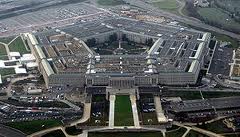Source: The Daily Telegraph
November 15, 2011
By John-Paul Ford Rojas
Home Office used ‘highly selective’ drug figures to make UKBA look good
The Home Office was today accused by the head of Britain’s statistics watchdog of using drugs seizure figures in a “highly selective” way in an attempt to portray the under-fire UK Border Agency “in a good light”.
Sir Michael Scholar has written to Home Office minister Damian Green asking for an explanation after a press release was issued showing an increase in cocaine and heroin seizures three days before new official statistics revealed the amount had fallen.
The publication of the figures last week was “irregular and inconsistent” with the code of practice and the Ministerial Code and should not happen again, he added.
Sir Michael, chairman of the UK statistics authority, said it was potentially “highly corrosive and damaging to public confidence in official statistics”
The UKBA – which is under fire over the relaxation of border checks – released figures on November 4, for publication last Monday, showing that border officials seized more cocaine and almost double the amount of heroin in the last six months than in the whole of the previous year.
But just three days later, the official Home Office Statistical Bulletin showed the amount of cocaine seized by border officials in England and Wales had actually fallen by a quarter in 2010/11 compared with 2009/10, and the amount of heroin seized had halved.
In his letter to Mr Green, Sir Michael wrote: “The Statistical Bulletin makes reference to a fall in the volume of seizures of Class A drugs in the most recent period.
“This contrasts with the November 4 press release, which highlights a large increase in seizures, albeit for a different time period.
“The November 4 press release, which appears not to have been published on either the Home Office or the UK Border Agency websites, and seems to have been distributed only to a select group of journalists, makes no reference to the forthcoming Statistical Bulletin.
“It was, I understand, produced without any involvement by, and without the knowledge of, the department’s statisticians; and it is highly selective in its choice of statistics, in order, it seems, to show the UK Border Agency in a good light.”
He went on: “It has been suggested to me that one motivation for this release was to generate positive news coverage ahead of the release of the National Statistics which showed a decline in the volume of drug seizures.
“I would welcome your reassurance that this is not the case. Were it to be the case, the authority’s view is that this would be highly corrosive and damaging to public confidence in official statistics.”
Sir Michael added that, while the UK Statistics Authority backs the publication of important statistics as soon as they are ready, “we believe that the right way to do this is to bring forward publication of the official statistics to the earliest date possible”.
He added: “I would be grateful for reassurance that these statistics will, in future, be released in accordance with the code of practice, and that the scope to bring forward their publication to the earliest possible date, on a regular and pre-announced basis, will be urgently explored, as required by the code of practice.”
UKBA chief executive Rob Whiteman had welcomed the release of the initial figures, saying: “Our work to secure the border all day, every day continues to show significant results despite the efforts of organised crime gangs to circumvent our controls.”
Mr Green added that “stopping harmful drugs like heroin and cocaine means we’re helping keep communities safe and preventing criminals exploiting the UK”.
“These seizures show our investigators are keeping pace with the ever-changing methods of criminal gangs to keep the border secure.”




 Creative Commons Attribution
Creative Commons Attribution